
This week, King Charles and Queen Camilla will head to Australia for the beginning of the first royal visit since the start of his reign. Ahead of their arrival, I’ve got some sparkling content from Australian visits past, starting today with an iconic gown and jewels worn by a young Queen Elizabeth II in 1954.

Queen Elizabeth II and Prince Philip were several months into their coronation tour of the Commonwealth when they arrived for a state banquet in Sydney, Australia, on February 4, 1954. The white-tie dinner, interestingly, was held at a luxury department store, David Jones, on Elizabeth Street in Sydney. The venue was the Great Restaurant, located on the seventh floor of the store. Here, Elizabeth and Philip are greeted by Joseph Cahill, the Premier of New South Wales, and his wife, Esmey Kelly Cahill. Delightfully, like the monarch, Esmey chose to wear a tiara for the banquet. Indeed, newspapers reported that a large number of the women in attendance wore tiaras for the occasion.
Unfortunately, the excitement of the people gathered to try to see the young monarch grew too overwhelming for the crown-protection measures that had been put in place outside the department store. More than 75,000 had gathered to try to see the Queen and the Duke, and the force of the crowd broke through the barriers that had been erected near the venue. Additional police had to be called in to handle the crush, and 180 people were reportedly injured, with some hospitalized for treatment.
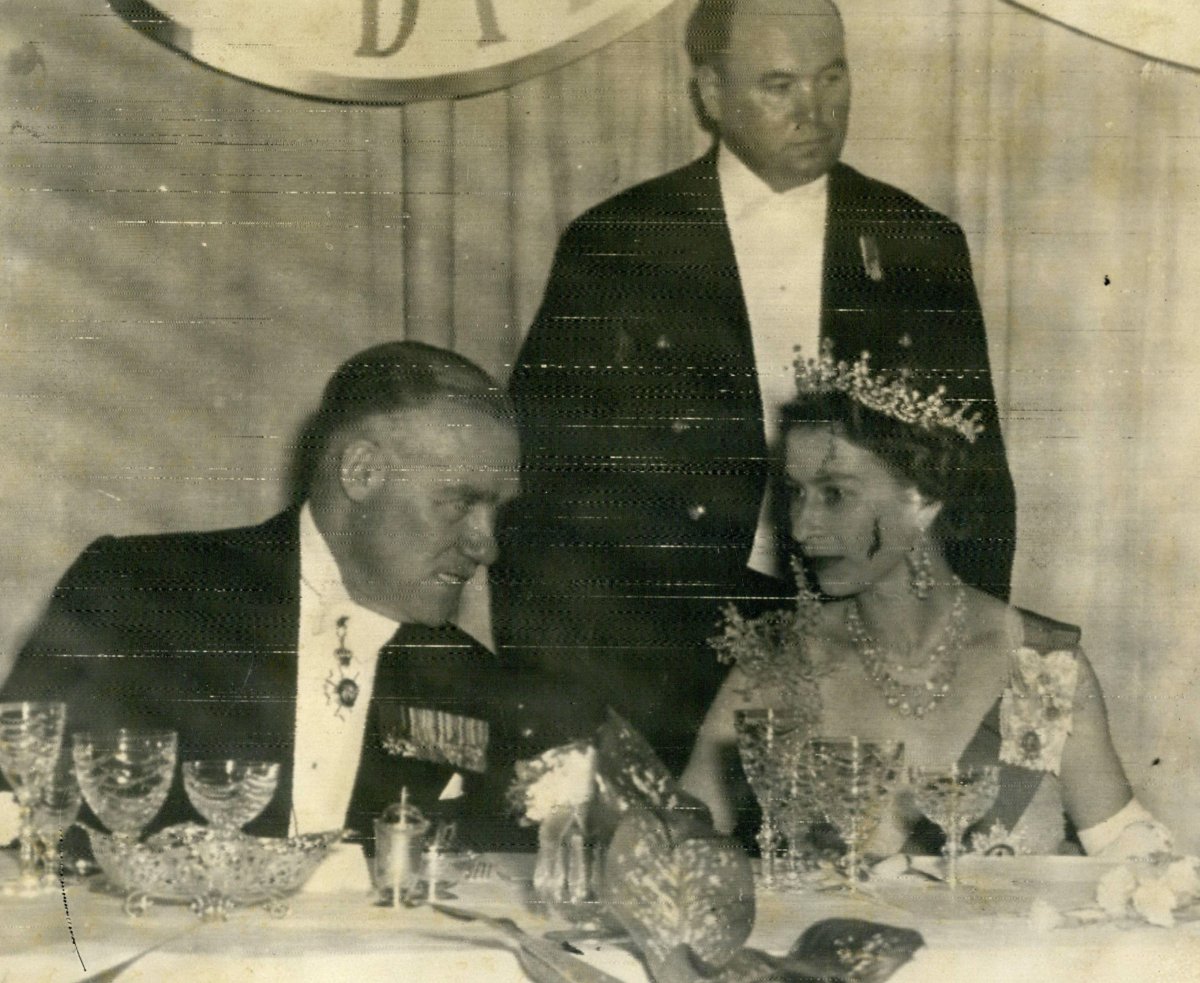
Things were calmer inside the restaurant, where both the premier and the monarch delivered remarks during the dinner. “The family is the cornerstone of the nation,” Cahill said. “The devotion of yourself and the Duke of Edinburgh to your family has brought great joy to your Australian subjects.”
In her remarks, Elizabeth praised the hospitality of her Australian hosts. “As my husband and I have approached these shores we have been very much aware, through radio and newspapers, of the great welcome which you have been preparing for us,” adding that “yesterday in Sydney we realized that its depth and warmth were far greater than we could have expected. I have felt very much at home and among my own people from the first moment that I stepped upon Australian soil.”
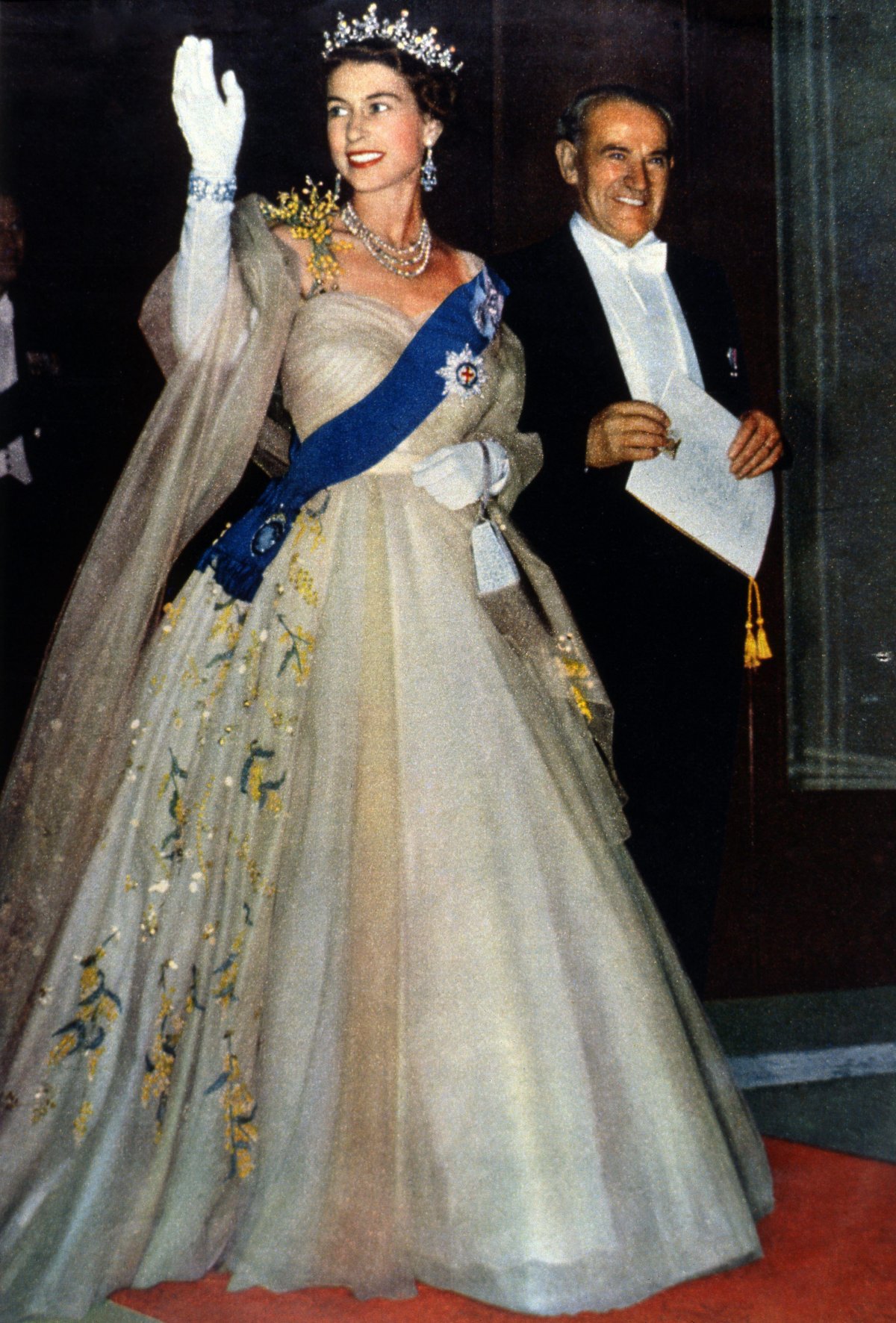
The Queen’s glamorous royal tour wardrobe, designed by the couturier Norman Hartnell, had won praise on every stop of the journey, but the ballgown that she wore for the state banquet in Sydney is perhaps one of the sartorial highlights of the impressive collection. The photograph above is colorized, but it gives you a general idea of the colors of the ensemble, though the yellow color in particular was apparently much more vibrant in person.
The Australian press was wowed by the gown. One newspaper, the Daily Mercury, wrote that the Queen was “a vision of superb loveliness” and provided an extensive, glowing description of her ensemble: “glorious” jewels placed on “the magnificent background” of “a lovely Hartnell gown of mimosa tulle with a fitted folded bodice and a full skirt with a short train. Sprays of wattle were embroidered on the skirt and another spray of wattle formed the right shoulder strap.” The special correspondent added, “It was at the Queen’s own request that Hartnell made her an evening dress using Australia’s national flower.”
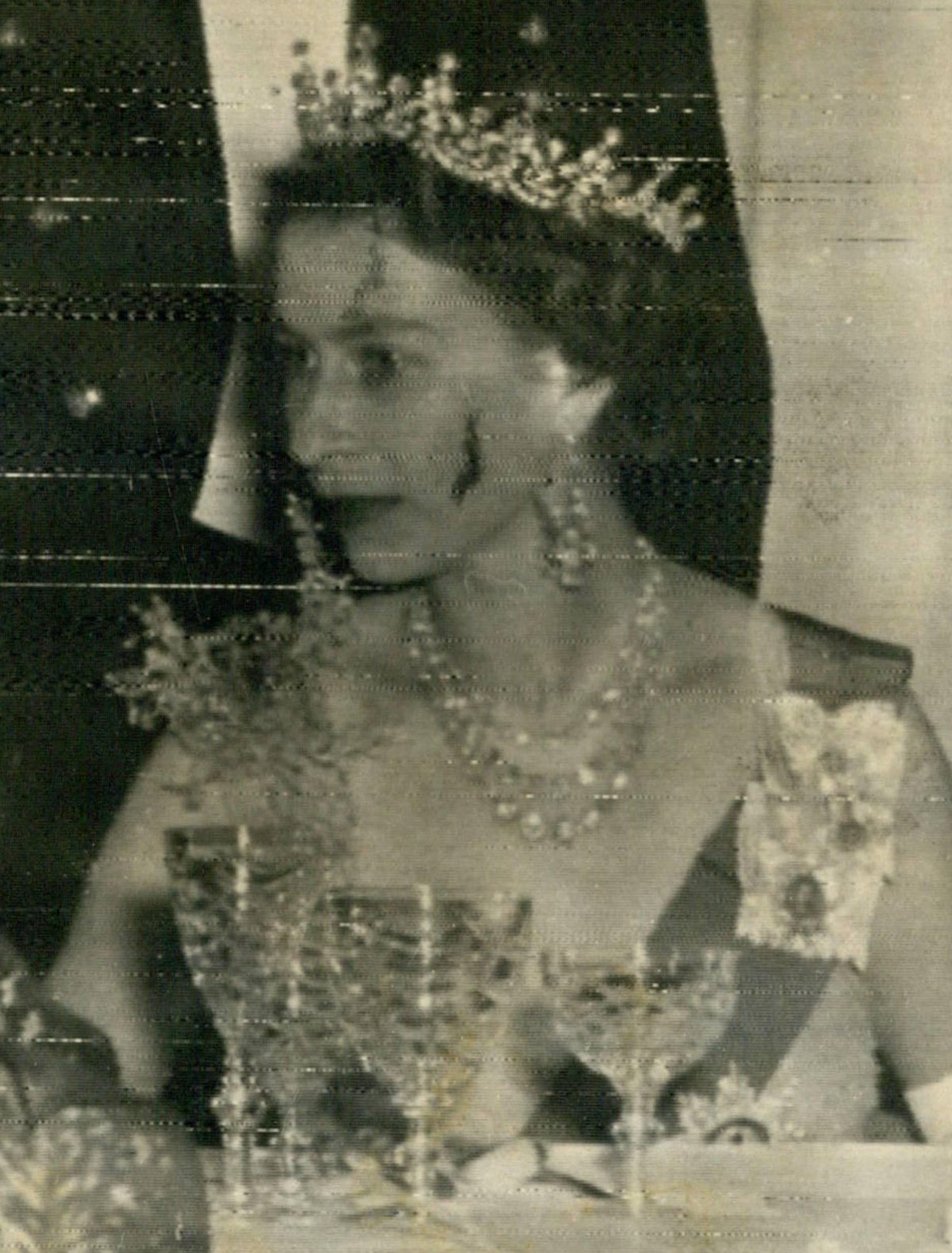
This photograph of the dinner shows some of the damage of age and digitization, but it offers a glimpse of her jewels in action during the dinner. The Queen wore the Girls of Great Britain & Ireland Tiara, a beloved royal heirloom given to her by her grandmother, Queen Mary, as a wedding present in 1947. She paired the tiara with the glamorous Greville Chandelier Earrings, made by Cartier and given to Elizabeth by her parents to celebrate her wedding. Her Diamond Festoon Necklace is also a legacy of King George VI and Queen Elizabeth. He commissioned the necklace, directing Garrard to use 105 loose diamonds from the vaults to make the new jewel in 1950.
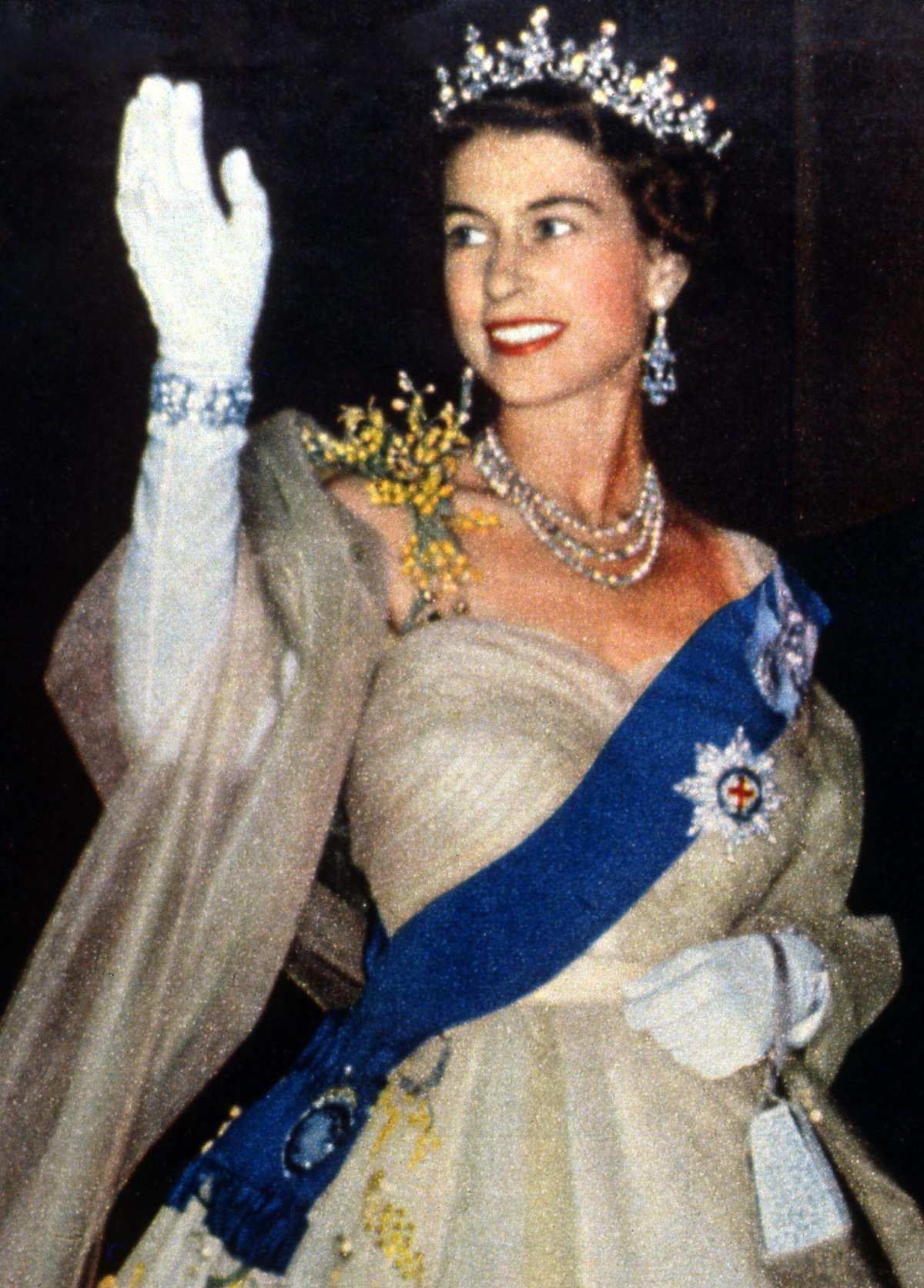
Elizabeth finished off the jewelry look with the Edinburgh Wedding Bracelet, a gift from her beloved Prince Philip, and a diamond evening watch. She also wore the sash and star of the Order of the Garter and the Royal Family Orders of her grandfather, King George V, and her father, King George VI. All of the jewels worn by Elizabeth for the state banquet in Sydney have appeared on members of the family in the years since her passing. Queen Camilla has worn the Girls of Great Britain & Ireland Tiara more than once, while the earrings, necklace, and bracelet have all been worn by the Princess of Wales.
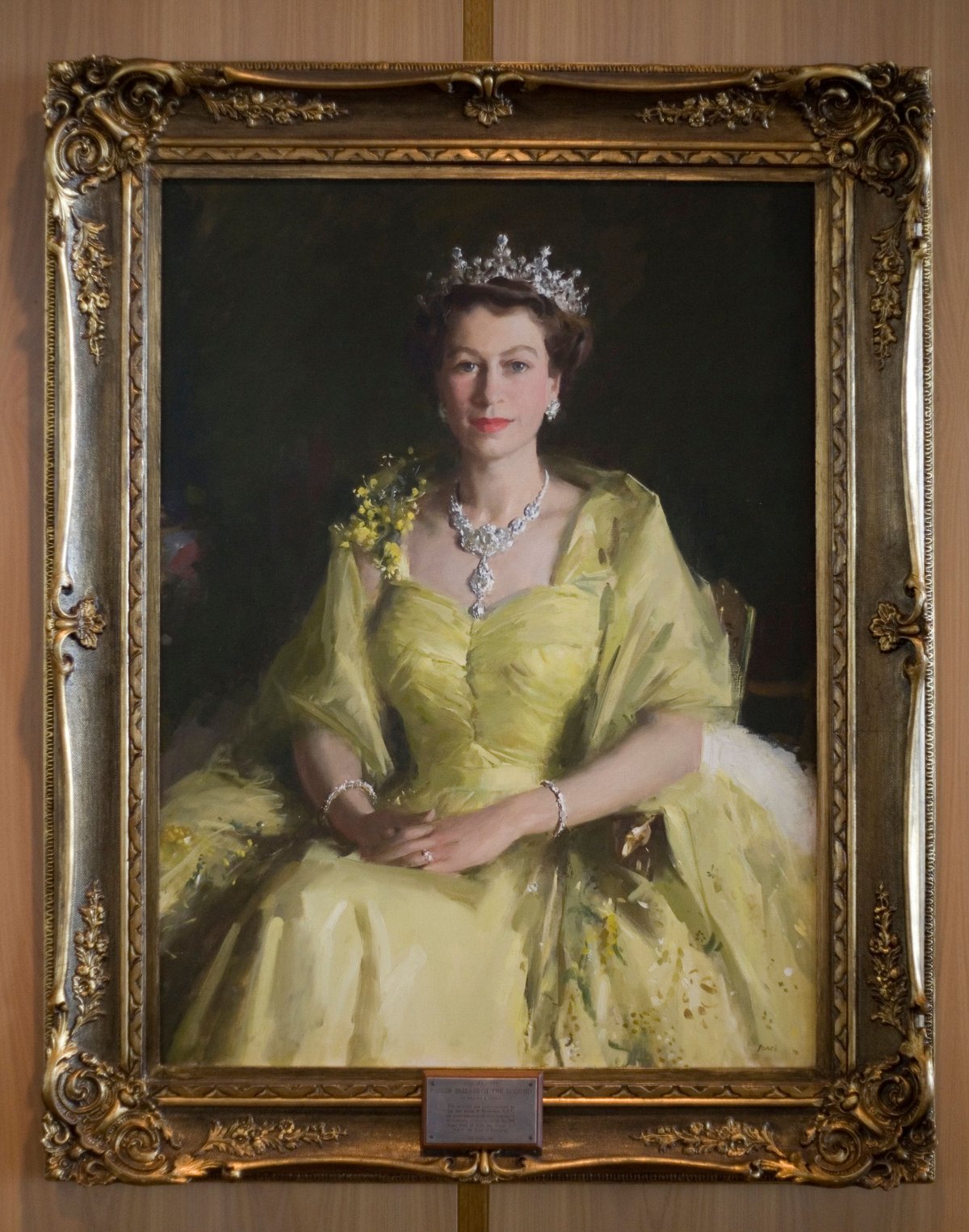
The Wattle Dress, as it became known, made such an impression that it was featured in an official portrait of Elizabeth II painted shortly after the banquet. After the Commonwealth Tour had ended, an Australian businessman commissioned the celebrated portrait artist William Dargie to paint the young monarch. With the help of Prime Minister Menzies, several sittings were arranged at Buckingham Palace in the autumn of 1954. The Age described the portrait, which was sent to be hung at Parliament House in Canberra, as “friendly and dignified.”
It was reportedly Dargie himself who asked that the Queen wear Hartnell’s wattle dress for the painting. He told the Australasian Post in 1955, “I was never more impressed than when I saw her wearing her wattle gown. It was regal and it was Australian. And that was the gown I wanted to paint her in.” For the portrait, she again wore the Girls of Great Britain & Ireland Tiara, but she switched out her necklace, bracelet, and earrings, wearing the Nizam of Hyderabad Necklace, Queen Mary’s Diamond Bangles, and the Mackinnon Floret Earrings instead.

The Wattle Portrait, as it has become known, is perhaps the most iconic image of Elizabeth II as Queen of Australia. Poignantly, it was displayed in a place of prominence during the national memorial service for the late monarch in 2022. Elizabeth liked the painting, too: in fact, she was so fond of the likeness that she asked Dargie to make a copy for her personal art collection. A third copy of the painting was made for Lady Hamilton Fairley, in whose home in London Dargie stayed while working on the portrait. That third portrait was acquired in 2009 by the National Museum of Australia.
Leave a Reply
You must be logged in to post a comment.